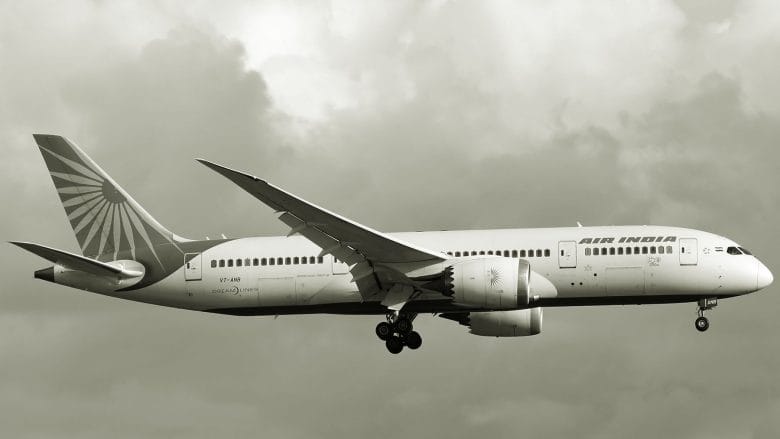Airline accidents are extremely rare. By the number of fatal accidents that takes place involving an aircraft is around 30 times less than the vehicles on the roads. Airline is still the safest mode of transportation by a massive margin.
That said, fatal accidents do happen, and they immediately become the talk of the world. As it happened after the tragic Air India 171 accident. However, the trouble of air accidents of this era is, it soon turns into a circus of big surges of misinformation. This is new to us. Due to the sheer nature of the complexity of air crash investigation, it takes time, and while the investigators do their job, there remains a big vacuums of information. Influencers, click-baiters, fear-mongerers flock into filling in that vacuum—now with added mayhem of AI generated fake stuff.
Journalists too are increasingly tempted to post clickbait false assumptions about accidents to sell the papers online. Aviation journalism is a specialised field, which often sees a lot of errors when handled by anyone at the news desks. They almost routinely post wrong images, mixes up with flight number, tail number, aircraft model number etc. simple publicly available verifiable data.
As most airline related incidents take time to investigate, the ideal way to handle information is to refraining from drawing conclusions and speculations, and producing currently known facts and details only. No matter whether you are journalist, administrator, politician and general concerned citizen—the most responsible thing to do is, not to say things like pilot screwed it up, Boeing made yet another blunder, Air India didn’t do proper maintenance—don’t say things like this. Because you do not know what happened, nobody officially does, until, only until the official reports are out.
Right here in this case, only yesterday (11th July 2025) the Indian Civil Aviation Authority released the initial preliminary report, and debunked some persistent speculations. Here is a list of what was being circulated, that has been proven wrong:
1. The pilots forgot the flaps / they mistakenly retracted the flaps instead of the landing gear: Wrong. The flaps were in its correct position for normal take off.
2. Probably bird strike: No.
3. Fuel contamination: No. Supplied fuel was tested, no issue found. Residual fuel from the aircraft have been sent to further test.
4. Dual engine malfunction: No, not directly, there was no engine malfunction reported.
5. Poor maintenance by Air India: Incorrect. Everything that was supposed to be done for the said aircraft was done on time, as per the schedule of international guidelines.
6. The aircraft was overweight, and the high temperature in Ahmedabad that day caused the trouble: Wrong. The plane was way within its safe limit of load, and maximum recommended operable outdoor temperature.
7. Pilots were tired or intoxicated: Wrong. They had enough rest based on the rules. They went through standard health tests. No anomaly found.
All these speculations were circulating around the Internet, all turned out to be incorrect.
Then what happened?
We clearly do not know yet, we will have to wait for the full answers until the final report comes out, which often takes years. However, the preliminary report indicates a few things, which we can say are officially accepted facts.
It started as an all normal take off, in this sequence of time-stamp in local Indian time
13:37:37 — The aircraft started to roll on the runway normally.
13:38:33 — The plane reached it’s decision speed V1 153 kts normally.
13:38:35 — It reached the Vr speed 155 kts, the threshold where the pilot starts to pull the nose up, they did, everything was normal.
13:38:39 — The aircraft took off with no issue.
Then the things started to becoming bizarre
13:38:42 — The aircraft achieved the maximum recorded airspeed of 180 Knots “and immediately thereafter, the Engine 1 and Engine 2 fuel cutoff switches transitioned from RUN to CUTOFF position one after another with a time gap of 01 sec. The Engine N1 and N2 began to decrease from their take-off values as the fuel supply to the engines was cut off. In the cockpit voice recording, one of the pilots is heard asking the other why did he cutoff. The other pilot responded that he did not do so.”
13:38:47 — Ram Air Turbine (RAT) deployed, both engines power passed below minimum idle speed, and the RAT hydraulic pump began supplying hydraulic power. RAT is a small windmill automatically deployed from the belly of the aircraft, generating power from the wind, in case no other power source is available.
13:38:52 — The Engine 1 fuel cutoff switch transitioned from CUTOFF to RUN.
13:38:54 — The APU Inlet Door began to opening, a normal behaviour of the APU auto start logic.
13:38:56 — Engine 2 fuel cutoff switch also turned from CUTOFF to RUN.
Both engines automatically started the restart and thrust recovery process as soon as the fuel started to come back.
13:39:05 — One of the pilots transmitted a MAYDAY call to the ATC.
13:39:11 — The flight data recorder stopped recording information.
Few Points to Note
1. Yes, it is extremely bizarre and difficult to fathom why would anyone deliberately cut off the fuel line! The engine fuel switches on Boeing 787 need to be pulled up with three fingers, and move up or down to toggle the cutoff or run, it is a very deliberate act, can not be done by a flick or by accident. And there was a 1 second gap between the engines being cut off from fuel, indicating a deliberate human act.
There was a previous FAA bulletin warned (2018) that the locking feature of fuel control switches could be disengaged or not properly installed, which increases the chance of unintentional movements. This check was not done on this aircraft during this bulletin, however, it was not exactly mandatory either.
Another faint possibility, in 787 and newer 737 models the fuel switches are electronic, even if physically it is manual and deliberate, they only send electronic inputs to the FADEC (Full Authority Digital Engine Control) computer system for the engines. A simultaneous signal failure with one second gap or wiring fault that tricked both FADECs into thinking they received a cutoff command is theoretically possible. Although it has never happened in known history.
2. The report (likely intentionally) did not indicate which pilot was asking that question why did he cutoff the fuel, and who was responding. Possibly to reduce media speculation about individual pilot and blame game before more information is available. So, please respect that, and let’s not start digging up the pilots’ private lives.
The Questions Left Open
1. Could this be a pilot error?: Manually switching off the fuel switches can not humanely be an “error,” it has to be deliberate. Unless and until, the locking problem issue mentioned in the 2018 bulletin affected the locking mechanism, and somehow the switched were flicked by a mistaken motion. About which we do not know for sure.
2. Was it a deliberate action by one of the pilots? If yes, which pilot did it?: We do not know answer to either of the questions.
3. Could this be a technical malfunction?: Yes possibly. One possibility is what mentioned in the point-1, that the locking mechanism was not working, and a miss movement turned the switches off. And it can also be an electronic signal glitch as explained above. We do not know.



